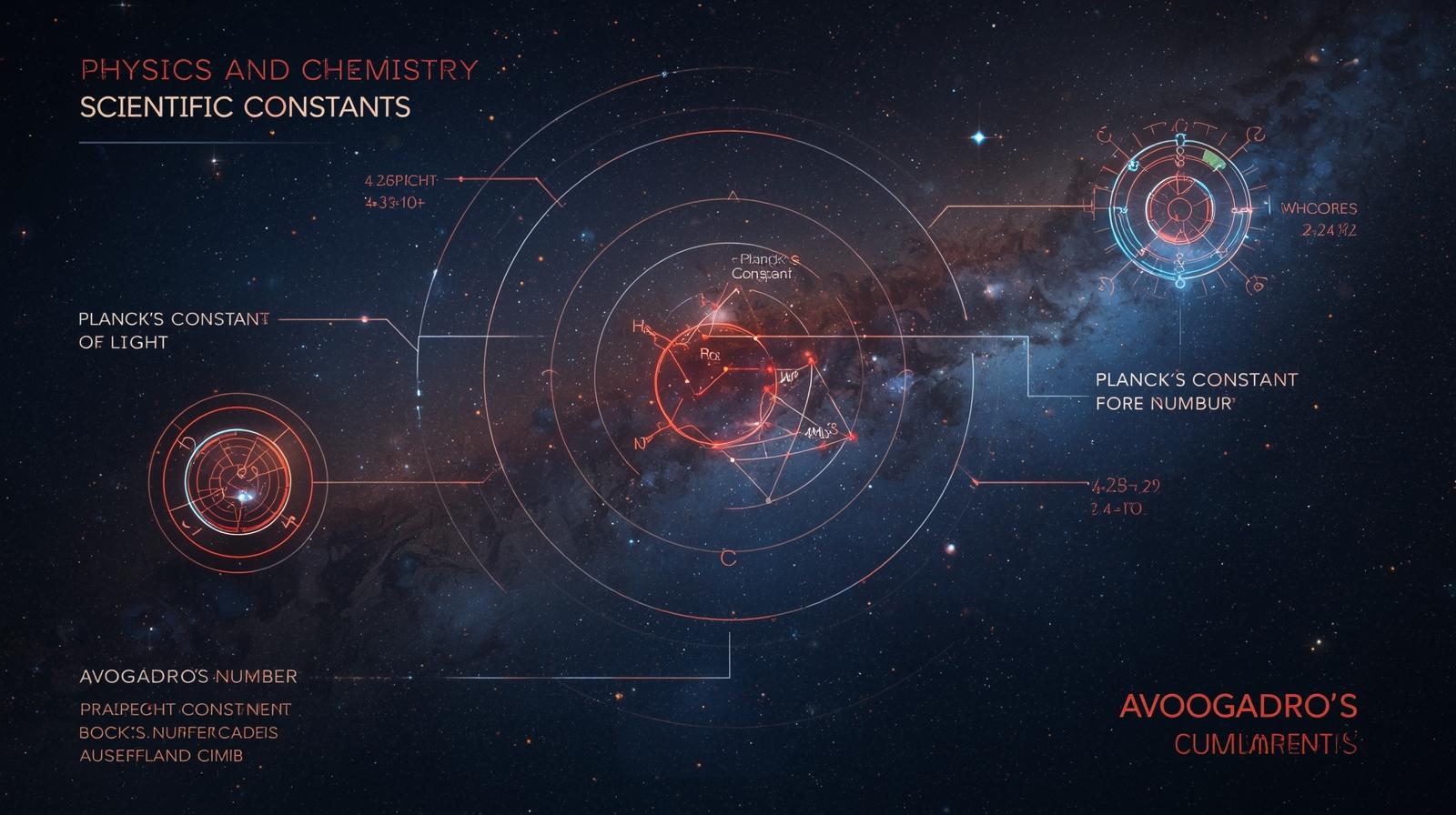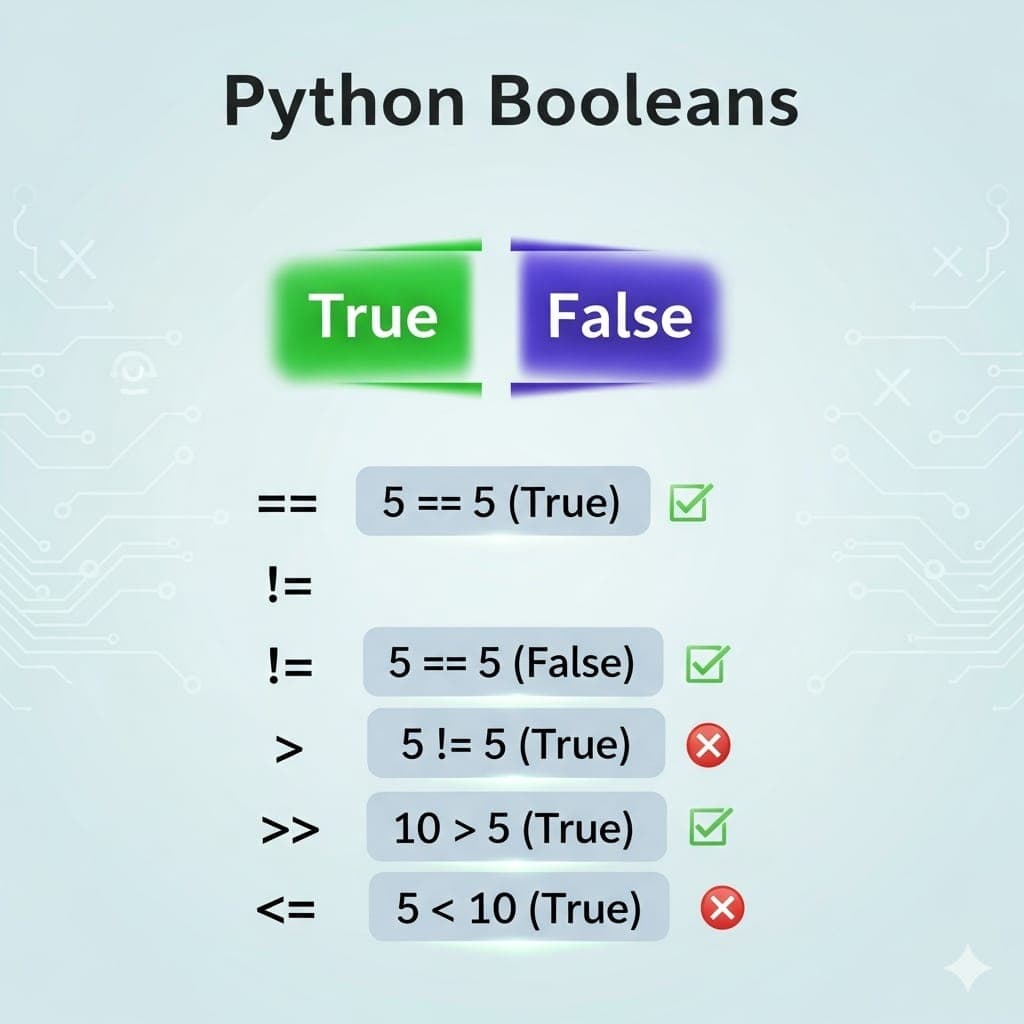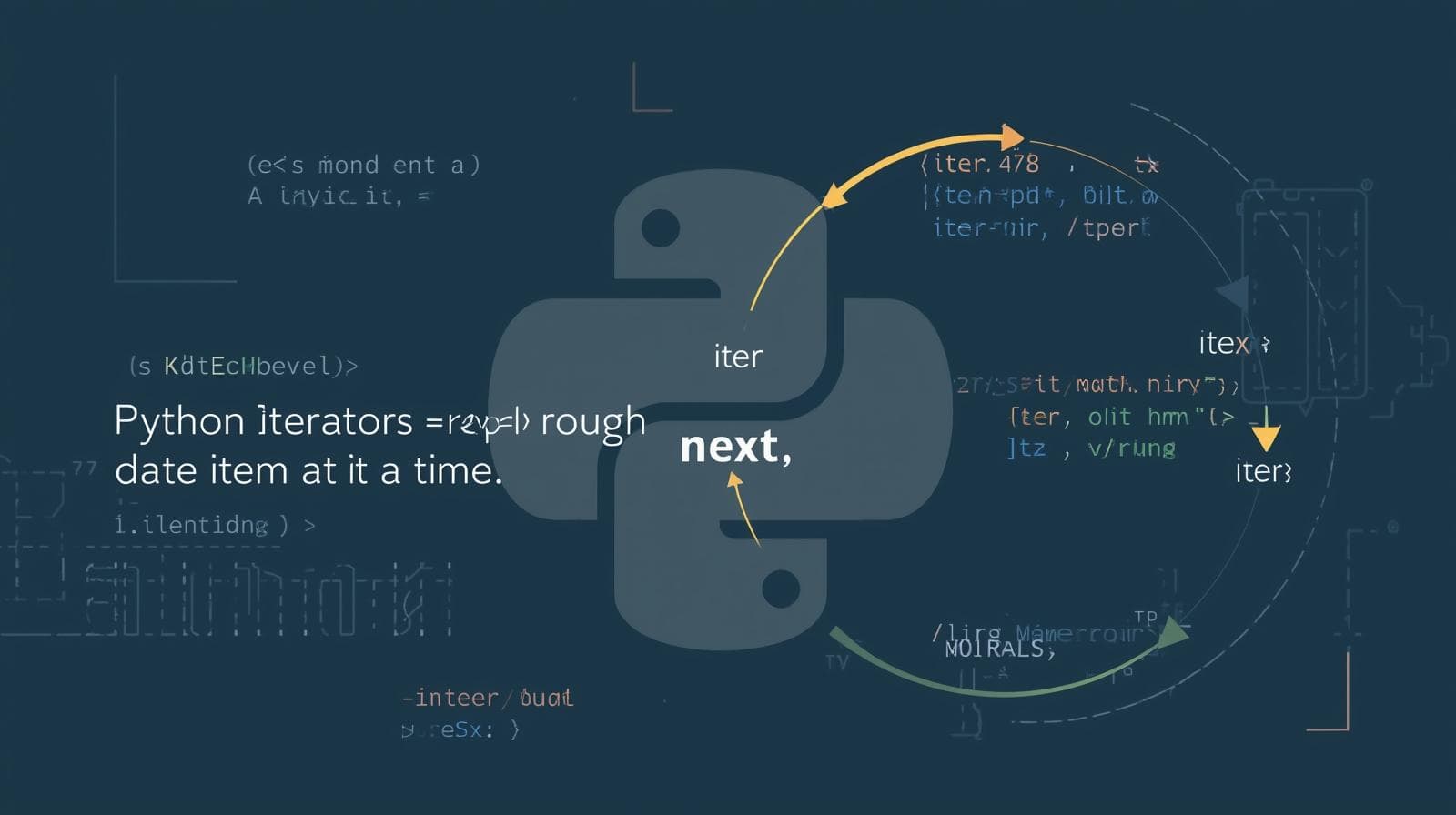Master SciPy Constants: A Definitive Guide with Python Code Examples

Unlock the power of SciPy Constants! This in-depth guide covers physical, mathematical, and unit constants with real-world Python examples, best practices, and FAQs.

Master SciPy Constants: A Definitive Guide with Python Code Examples
Master SciPy Constants: The Ultimate Guide to Precision in Python
Have you ever been working on a complex physics simulation or a delicate engineering calculation, only to pause and ask yourself: "Wait, what's the exact value of the gravitational constant again? And is it in m³ kg⁻¹ s⁻² or some other unit?" If you've ever frantically Googled a constant, copied it from Wikipedia, and hard-coded it into your script, you're not alone. But you're also introducing a tiny, yet potential, source of error and inefficiency into your work.
What if Python could remember these values for you? What if you had access to a meticulously curated, high-precision database of the universe's most important numbers, right at your fingertips?
Enter SciPy Constants.
This powerful module within the iconic SciPy library is the unsung hero of scientific computing in Python. It's a treasure trove of physical, mathematical, and unit conversion constants that can transform your code from a fragile, error-prone script into a robust, professional, and maintainable application.
In this comprehensive guide, we won't just skim the surface. We will dive deep into the world of SciPy Constants. We'll explore its structure, use it in real-world scenarios, discuss best practices, and answer common questions. By the end, you'll be equipped to wield constants with confidence and precision.
To learn professional software development courses such as Python Programming, Full Stack Development, and MERN Stack, which heavily utilize libraries like SciPy in data science modules, visit and enroll today at codercrafter.in.
What Exactly is SciPy Constants?
At its core, scipy.constants is a module that provides a wide array of scientific constants and conversion factors. It's a pre-packaged, reliable source of truth for the numbers that underpin physics, chemistry, and engineering.
Think of it as your personal digital appendix of the most critical scientific data. Instead of defining:
python
speed_of_light = 299792458.0 # m/sand hoping you never mistype that long number, you can simply import and use:
python
from scipy.constants import c
print(c) # Output: 299792458.0The advantages are immediate:
Accuracy: The values are vetted and from authoritative sources (like CODATA).
Consistency: Everyone using SciPy uses the same value, ensuring reproducibility.
Convenience: No more manual lookups or copy-pasting.
Maintainability: If a constant's accepted value is updated (it happens!), you just update SciPy, not your code.
A Quick Primer: Installing SciPy
Before we can use any constants, we need SciPy. If you haven't already, installation is straightforward via pip:
bash
pip install scipyFor a more managed environment, particularly for data science, you might want to install the entire Anaconda distribution, which includes SciPy and countless other essential libraries. This holistic approach to setting up a development environment is a key skill taught in our Python Programming course at CoderCrafter.
Exploring the Universe of Constants: Categories and Examples
The scipy.constants module is organized into several logical categories. Let's embark on a tour of this digital universe of fundamental numbers.
1. Physical Constants (The CODATA Collection)
This is the crown jewel of the module. The Committee on Data for Science and Technology (CODATA) periodically publishes an internationally recommended set of values for fundamental physical constants. SciPy provides these values with incredible precision.
You can access them directly or via a dictionary-like object.
Example 1: Fundamental Physics
python
from scipy.constants import c, h, hbar, k, epsilon_0, mu_0, G
print("Speed of light in vacuum (c):", c, "m/s")
print("Planck constant (h):", h, "J s")
print("Reduced Planck constant (hbar):", hbar, "J s")
print("Boltzmann constant (k):", k, "J/K")
print("Vacuum electric permittivity (epsilon_0):", epsilon_0, "F/m")
print("Vacuum magnetic permeability (mu_0):", mu_0, "N/A²")
print("Gravitational constant (G):", G, "m³ / kg s²")Example 2: Atomic and Nuclear Constants
python
from scipy.constants import e, m_e, m_p, m_n, N_A, R
print("Elementary charge (e):", e, "C")
print("Electron mass (m_e):", m_e, "kg")
print("Proton mass (m_p):", m_p, "kg")
print("Neutron mass (m_n):", m_n, "kg")
print("Avogadro's constant (N_A):", N_A, "mol⁻¹")
print("Molar gas constant (R):", R, "J / mol K")Example 3: Using the physical_constants Dictionary
For even more metadata, use the physical_constants dictionary. It returns a tuple: (value, unit, uncertainty).
python
from scipy.constants import physical_constants
# Get info about the proton mass
proton_info = physical_constants['proton mass']
print("Value:", proton_info[0])
print("Unit:", proton_info[1])
print("Standard Uncertainty:", proton_info[2])
# Get the fine-structure constant
alpha_info = physical_constants['fine-structure constant']
print("\nFine-structure constant (α):", alpha_info[0], "(Dimensionless)")This is incredibly powerful for high-precision work where understanding the uncertainty of a measurement is crucial.
2. Mathematical Constants
While the math module provides pi and e, scipy.constants includes them as well for completeness, alongside a few others.
python
from scipy.constants import pi, golden, degree, minute
print("Pi (π):", pi)
print("Golden ratio (φ):", golden)
print("Degrees in one radian:", degree) # 1 radian in degrees
print("Minutes in one hour:", minute) # 1 hour in minutes (i.e., 60)Note: degree is the value of one radian expressed in degrees (180/π ≈ 57.295...), not the constant 1.0.
3. Units and Prefixes: Your Conversion Toolkit
This is where SciPy Constants becomes more than just a list of numbers. It provides a comprehensive set of multipliers for unit conversion. No more wondering how many Pascals are in an atmosphere or joules in a calorie.
Example 1: Pressure and Energy Conversions
python
from scipy.constants import atm, bar, calorie, psi, eV
print("1 atmosphere in Pascals:", atm) # 101325.0
print("1 bar in Pascals:", bar) # 100000.0
print("1 calorie in joules:", calorie) # 4.184
print("1 pound per sq. inch (psi) in Pascals:", psi) # ~6894.76
print("1 electronvolt in joules:", eV) # ~1.602e-19Example 2: Using SI Prefixes
Need to express a value in nanometers or gigabytes? Use the prefixes!
python
from scipy.constants import nano, micro, milli, kilo, mega, giga, tera
wavelength = 550 * nano # 550 nanometers in meters
print("Wavelength:", wavelength, "meters") # 5.5e-07
disk_capacity = 2 * tera # 2 terabytes in bytes
print("Disk Capacity:", disk_capacity, "bytes") # 2000000000000.0
frequency = 2.4 * giga # 2.4 GHz in Hz
print("Wi-Fi Frequency:", frequency, "Hz") # 2400000000.0This makes unit handling incredibly clean and readable.
Real-World Use Cases: Bringing Theory to Life
Let's move beyond theory and see how scipy.constants solves real problems.
Use Case 1: Calculating the Energy of a Photon
A classic physics problem: given the wavelength of light, calculate the energy of a single photon. The formula is E = h * c / λ.
The "Hard-Coded" Way (Error-Prone):
python
# Let's calculate the energy of a red photon (λ = 700 nm)
h = 6.62607015e-34 # J s (Did I get this right?)
c = 299792458.0 # m/s (Correct)
wavelength_nm = 700
wavelength_m = wavelength_nm * 1e-9 # Convert nm to m
E = (h * c) / wavelength_m
print(f"Energy: {E:.4e} Joules")
# This works, but what if the value of h changes? What if I mistype 1e-9?The "SciPy Constants" Way (Robust & Readable):
python
from scipy.constants import h, c, nano
wavelength = 700 * nano # Define wavelength directly in meters
energy = (h * c) / wavelength
# Let's also express it in electronvolts using SciPy's conversion
from scipy.constants import eV
energy_ev = energy / eV
print(f"Energy: {energy:.4e} Joules")
print(f"Energy: {energy_ev:.3f} eV") # Much more common unit in physicsThis code is self-documenting, uses the most precise available values, and is immune to typos in the constant values.
Use Case 2: Ideal Gas Law Calculations
The ideal gas law is PV = nRT. Let's calculate the volume of 1 mole of an ideal gas at Standard Temperature and Pressure (STP: 0°C and 1 atm).
python
from scipy.constants import R, atm
# Define conditions
n = 1.0 # mole
T = 273.15 # Kelvin (0 °C)
P = 1.0 * atm # Pressure in Pascals
# Calculate Volume V = nRT / P
V = (n * R * T) / P
print(f"Volume of 1 mole at STP: {V:.4f} m³")
print(f"Which is {V * 1000:.4f} liters") # Convert cubic meters to litersBy using atm, we avoid manually defining 101325 Pa, making the code intention clearer (P = 1.0 * atm is very readable).
Use Case 3: Engineering - Stress and Strain
An engineer is analyzing a steel beam with a cross-sectional area of 0.01 m² subjected to a force of 50,000 Newtons. They need to find the stress in both Pascals and PSI (pounds per square inch) for a report.
python
from scipy.constants import psi
force = 50000 # Newtons (N)
area = 0.01 # square meters (m²)
stress_pa = force / area # Pascals (N/m²)
stress_psi = stress_pa / psi # Convert to PSI
print(f"Stress: {stress_pa:.2f} Pa")
print(f"Stress: {stress_psi:.2f} psi") # Required for the reportThis demonstrates seamless unit conversion for communication across different measurement systems.
Best Practices and Common Pitfalls
Using SciPy Constants is simple, but following these practices will make you a true professional.
Import What You Need: For clarity and efficiency, import specific constants.
Good:
from scipy.constants import c, h, eVLess Ideal:
from scipy.constants import *(can pollute your namespace)
Understand the Units: This is the most critical point. Always check the unit of the constant.
Gis in m³ kg⁻¹ s⁻²,cis in m/s,eis in Coulombs. Using a constant with the wrong unit assumption is a common source of errors.Precision for Your Application: The constants are extremely precise, but does your application need that level of precision? For a rough calculation,
g = 9.8might be sufficient, but for satellite trajectory modeling, you must usescipy.constants.g(which is the standard gravity, ~9.80665) or better yet, a more complex model.Be Aware of Updates: The CODATA values are updated every few years. While this doesn't happen often, if you require a specific year's values for reproducibility, you should note which version of SciPy you used.
Use the Dictionary for Metadata: If you are writing code for critical scientific publication, use the
physical_constantsdictionary to access and potentially report the standard uncertainty of the values you used.
Mastering these nuances is what separates a beginner from an expert developer. Our Full Stack Development program at CoderCrafter emphasizes this kind of robust, best-practice-driven coding, essential for building reliable applications.
Frequently Asked Questions (FAQs)
Q1: How is this better than just using the math module?
The math module only provides very basic mathematical constants like pi and e. scipy.constants provides a vast, comprehensive collection of physical constants and unit conversions that math does not.
Q2: Are the values in SciPy Constants the most up-to-date?
Generally, yes. The SciPy team updates the constants to reflect the latest CODATA recommendations when new versions of the library are released. You can check the official SciPy documentation for which CODATA year a specific version uses.
Q3: What's the difference between scipy.constants.g and scipy.constants.G?
This is a crucial distinction!
Gis the universal gravitational constant (≈ 6.67430e-11 m³ kg⁻¹ s⁻²), used in Newton's law of universal gravitation.gis standard acceleration due to gravity on Earth (≈ 9.80665 m/s²). It's a location-specific value derived fromG.
Q4: Can I add my own custom constants to the module?
It's not recommended to modify the SciPy source code. Instead, create your own module or config file for project-specific constants. For example, create a project_constants.py file and import from there.
python
# project_constants.py
SPECIAL_MATERIAL_DENSITY = 2450 # kg/m³
CUSTOM_CONVERSION_FACTOR = 1.732Q5: Is there a performance cost to using SciPy Constants?
No. The constants are simply float values stored in memory. Using c is exactly the same for the Python interpreter as using 299792458.0. It's a compile-time substitution.
Conclusion: Stop Guessing, Start Using Constants
The scipy.constants module is a testament to the power and philosophy of Python's scientific ecosystem: automate the tedious, standardize the foundational, and let developers focus on solving the unique and interesting problems.
By integrating this module into your workflow, you:
Eliminate errors from manual data entry.
Write cleaner, more intention-revealing code.
Ensure reproducibility and consistency across your projects and teams.
Gain access to professionally curated scientific data.
It's a small tool that makes a monumental difference in the quality and reliability of your scientific and engineering code. So the next time you need the mass of an electron or to convert atmospheres to Pascals, remember: import scipy.constants is your key to a universe of precision.
Ready to build the skills to not only use libraries like SciPy but to understand the programming principles behind them? To learn professional software development courses such as Python Programming, Full Stack Development, and MERN Stack, visit and enroll today at codercrafter.in.









